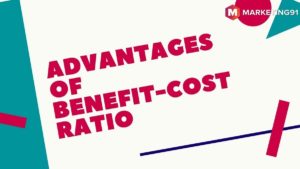Clik here to view.

The benefit-cost ratio is defined as a financial ratio that determines whether the costs incurred during the execution of the task or project will be less or more than the amount made from the project.
It tries to identify the success and profitable rate of the project so that a project manager or the owner of a company can decide whether to continue with the project or dump it in the garbage can.
Meaning of benefit-cost ratio
A benefit-cost ratio or simply BCR is considered as an indicator or a marker to show the relationship between the proposed project’s advantages and relative cost. It is primarily used in cost-benefit analysis or CBA and is generally reflected via qualitative or monetary terms.
As per the analysts, if a project or a task displays BCR higher than 1.0, it is considered to be good and expected to deliver positive-net-present-value to a company. Similarly, if the benefit-cost ratio is less than 1.0, the cost of the project is greater than estimated advantages and in that case, should be discarded or re-valued.
The formula of benefit-cost ratio
The formula to calculate the benefit-cost ratio is as follows-
Benefit-cost ratio = Present Value or PV of benefit expected from the project / PV of the cost of the project
5 Advantages of benefit-cost ratio
Image may be NSFW.
Clik here to view.
There are numerous advantages of a cost-benefit ratio, and this is why it has gained such prominence amongst the business entities and analysts. Some important advantages are as follows-
#1. Additional clarity
The benefit-cost ratio offers an additional level of clarity to its users. A person can easily go through the detailed specifics and understand the exact location of the cash inflow or spending that will occur. Once the outflow and inflow are listed, it becomes easy to evaluate the happenings in the project.
You will have to factor that some costs are unpredictable similarly as some profits will also be random. This is why it is advised to stick with an indicator that is high above 1.0.
#2. Gives an insight inside unknown territories
A project is a long-drawn-out process with lots of additional costs and variables attached to it. Once you have calculated the benefit-cost ratio, it will become easier for you to find the potential variables that can have a direct impact on the bottom line.
Once a person starts figuring about the unexpected variable that might come up in the project, he will be able to create an accurate benefit-cost ratio.
#3. Overall Feasibility
The benefit-cost ratio manages to give an inside look into the overall feasibility of a project. Once you have been able to decipher, list, and calculate the benefits and cost, it becomes easier to gauge the expected result.
This calculation gives a person confidence to predict his project.
#4. Develop advantageous policies
Once a person starts understanding the method to increase his benefits, then he can follow that path with confidence. The chances of an inaccurate benefit-cost ratio are now slim.
#5. Glimpses of affordability
The benefit-cost ratio offers glimpses of affordability in the current scenario. An individual can now look at the several additional costs that are necessary to proceed and make a concrete decision. Will your company be able to handle the additional costs and is it financially strong enough to afford them.
There have been cases where the benefit-cost ratio has been positive, but later the additional costs came in the way as boulders and toppled the task to ground.
5 Disadvantages of benefit-cost ratio
Image may be NSFW.
Clik here to view.
There are bound to be side-effects or disadvantages of any tool, and the benefit-cost ratio has several. Some of them are as follows
#1. False hopes –
It can sometimes give false hopes because of the high level of confidence in the success of the benefit-cost ratio. Once a person has undertaken the calculation with diligence, he gets the confidence to assume the success of his venture, especially if the benefit-cost ratio shows a good rating.
It is just a tool to evaluate the success or risk rate, and a score of 1.0 and above is considered a good risk, and below is a bad risk. It is wrong to assume that a good score in the BCR can lead to success because there are several variables and outside elements that can make the project a failure.
Blind trust in a tool can fail.
#2. Does not take into account indirect benefits
The benefit-cost ratio does not show some indirect benefits that a project might garner. Sometimes brand awareness and loyalty can be earned via value-added services. This factor is not reflected via the benefit-cost ratio.
#3. Acts as a validation
An investor can easily alter some figures to get a good benefit-cost ratio because most investors trust a BCR, and this will help them to garner necessary funds. It is up to an individual to go through the figures with diligence so that he can look at the figures depicting cost and benefits.
#4. Can add more value to biased variables
Sometimes people want the investment at any cost and can offer the value that is higher compared to reality. This results in inaccurate BCR and can cause grave concerns later on.
#5. There is a room for subjectivity
The benefit-cost ratio is subjective, and the person who calculates it might consider variables that others are not thinking about. This can result in a wrong BCR and ultimately loss in the project.
The post Benefit-Cost Ratio: Meaning, Formula, Advantages and Disadvantages appeared first on Marketing91